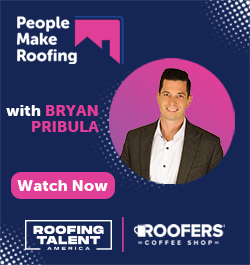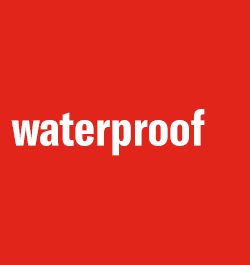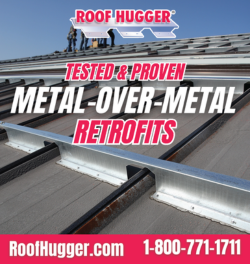Which is Better: Reroofing or Recoating?

By Cass Jacoby, RCS Reporter.
A look at both sides of the industry-wide debate.
Why recoat
The key to successfully recoating a metal roof is selecting the right coating system. Recoating systems are not one size fits all because metal roofs have many variations between metal types and factory-applied coatings. You want to be sure the recoating bonds well with the current roof while still protecting the roof from further deterioration, solving issues like leaks and offering an attractive appearance. All of these aspects of recoating will be addressed in a roof survey, along with questions like:
-
What is the surface of the roof? Metal roofs include a diversity of metals, from galvanized iron to fluoropolymer—they may have previously been coated.
-
Do repairs need to be done to seams, fasteners, connections, penetrations or surface-mounted item connections?
-
Does your client want to reduce solar heat transmission? This can lower climate control expenses
Coating over a prefinished roof requires a delicate approach. Cleaning, preparing the surface, applying the bonding primer and finishing coating are crucial to creating a finish that will stick and perform well. This is because the fluoropolymer additives in the existing coating create a slick, hard-to-adhere-to surface.
If you are coating older galvanized metal roofing panels, the roof needs to be power washed. Newer galvanized metal panels need to be checked for film oils applied at the factory that can contribute to premature white rust forming.
When coating existing metal roof panels with baked-on enamel, powder coating, or aftermarket paints, the surface also needs to be pressure-washed and tested for adhesion. Check to see if existing coatings have oxidized after the years by running a finger over the panel. If oxidized residue rubs off on your finger, the surface needs to be cleaned.
Follow the manufacturer’s recommendations if the metal roof has a seam, fastener, flashing, or penetration issues. This detail work can be extensive on a deteriorated roof and take as long at the recoat.
Now you can apply your coatings; make sure before you do so that:
-
You have given your client the product on a field sample, confirming the homeowner likes the sheen, color, texture and overall surface.
-
The weather is in your favor. A coating manufacturer will recommend the best temperature for application and cure time; you want to be sure the weather isn’t too cold or too hot so that the coatings won’t fail.
There are many benefits to recoating a metal roof in lieu of installing a new roof. Above all, recoating is far less expensive than replacing the roof. Plus, recoating has a smaller work footprint, so it is less disruptive to the building. Additionally, applying solar reflective coatings can result in better energy performance than replacing a metal roof.
It would help if you considered reroofing over recoating when:
-
The metal is structurally unsound.
-
The existing roof is “uncoatable.”
-
The roof has been damaged too much to be aesthetically viable.
-
The cost of repairing and recoating the roof is greater than getting it replaced.
Tim Simpson of Ames Research Laboratories suggests, “When considering warranty requirements for building owners, available warranties can vary depending on the number of coats applied, if the coating system required detail work that has been completed, and if certain quality control measures have been followed. Manufacturers’ warranties are frequently for material performance, and the contractor applying the materials is responsible for issuing an installation and service warranty."
Common sense would dictate that your client's best value is also the best for you in the long run, as satisfied customers tend to lead to referrals. Recoating of aged metal roofs can be a valuable tool in your tool pouch for creating additional sales.
Why reroof
There are, as stated above, many reasons to recoat a roof; however, there are also many reasons not to recoat. Coating your roof will void any warranties that exist. Most metal roofs have 25 (or more) year finish warranties. Besides, a roof coating is a short-term solution to leaks. The cost of a recoat is between 25% to 70% of a new roof. Plus, recoating is broken down by thermal cycling that causes the roof to expand and contract, making the reflectivity reduce by more than half in the first year and cracking the coating. Plus, any imperfections to the coating can trap moisture between the coating and your metal roof, which can accelerate corrosion.
A new metal roof can be the better option considering that many of the recoating advantages are achieved with reroofing. A new metal roof can be installed over the existing one, minimizing disruptions. Retrofitting over the top of the roof creates a cavity that can be insulated or ventilated to increase the building's energy efficiency.
Plus, there are many advantages to reroofing that are unique to the process. Namely, a new roof will be compliant with current building codes and much more resilient against strong winds and snow. New roofing materials can have double the service life of old roofs and can be upgraded to standing seam roofs, which offer an option to add solar panels.
“Why spend 25% to 70% of the cost of a proper, fully code-compliant metal roof for a short-term solution that only moves the repair back a couple of years?” says Roof Hugger President Dale Nelson. “You can put a patch on an old, bald tire, and it may last for a little while longer, but you still have an old, bald tire. The coating will not make an old metal roof a new metal roof—only a new metal roof will do that.”
Ultimately, coating is a short-term solution that costs 25% to 70% of a fully code-compliant metal roof. A reroof has far more advantages that are long-lasting; investing in a reroof is worth it.
Stay up to date with the latest roofing industry news when you sign up for the RCS Week in Roofing e-news.






















Comments
Leave a Reply
Have an account? Login to leave a comment!
Sign In